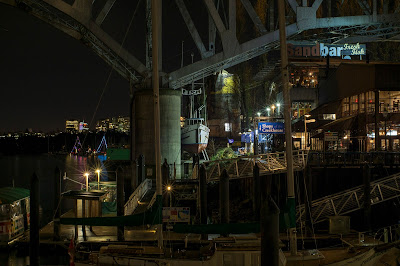Cost: 25$, including SLR (average market price $25, lens only)
Let's start with the positive. Due to the low weight and versatile range, it can be easily used for travel, close-ups, landscapes, and just doing some photo-walks. Mostly sold as a kit lens, it was targeted for the budget minded consumers, going with the low end of the SLR's. It's fairly sharp in the center, and renders nice colors. And there it stops...
Used as manual lens, it's pretty much a pain in the ... The focus zoom ring is so small that you fingers can barely handle it. This is likely not a problem when used with auto focus, but as my camera and adapter does not support auto focus, I will never know. The focus ring is also very flimsy, making accurate focussing hard. The whole barrel is also wobbly. The zoom ring is slightly better, providing a decent grip, but still flimsy. In short, it feels and handles like a very cheap, fragile, plastic lens. It even comes with a plastic lens mount.
Image quality is questionable. Sharp in the center when using middle aperture, soft in the corners, and the lens is not able to resolve the resolution of the sensor. When pixel peeping, you can see the loss in details, and the noise it generates. Of course, that fact that this is a slow lens, does not improve the image quality overall.
This is however the third version of this lens, made in Thailand. The first version, made in Japan, had 6 elements in 6 groups and with a metal lens mount. This version was a little easier to use, at is was designed with also manual users in mind. On the second lens, the manual focus seemed to be designed as an after-though, of for emergencies when the auto-focus malfunctions. Some say that the Japan made lens was better in quality then it's successors where more concessions were made to reduce the price. The second lens was also made in Thailand, with the same design as the 3rd, but with a metal lens mount.
So, it's not a totally crappy lens, but I would not use it if you want to make quality pictures. But as a cheap, lightweight lens, it might have it's purpose. It can still be used when you auto focus fails, and if the lens get damaged (should not be to hard to do), you haven't lost to much. So the value of cheap is low in this case, but the price does make it easily replaceable.
Lens Specification:
Focal Length: 35-80mm
Maximum Aperture: F4
Minimum Aperture: F22
Image Format: 35mm
Lens Mount: NF (plastic)
Optics: 8 elements in 6 groups
Blades: 7
Focussing: Manual
Minimum Focus: 35cm
Filter Size: 52mm
Weight: 180g
Length: 67mm
Production: 1995-2006
Serial Number: 99610246
Made in: Thailand
More information on
Nikon Corporation























































